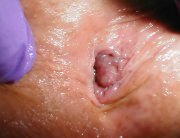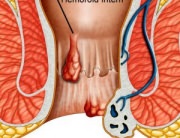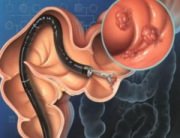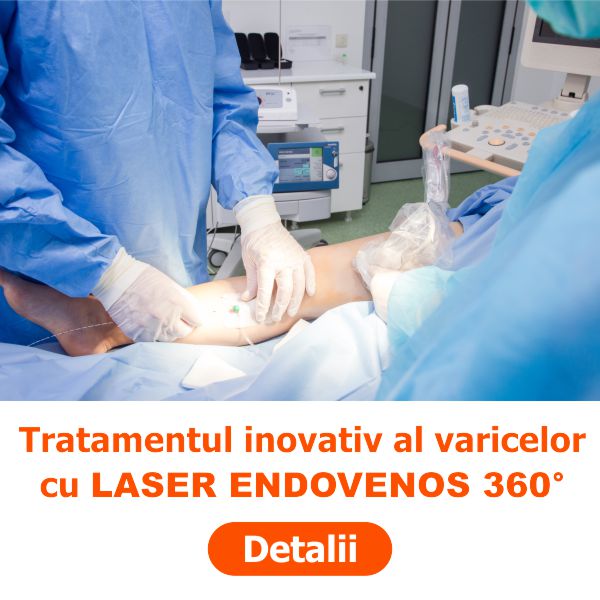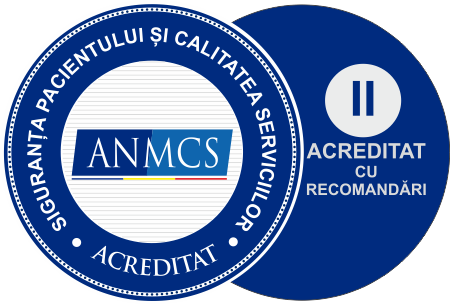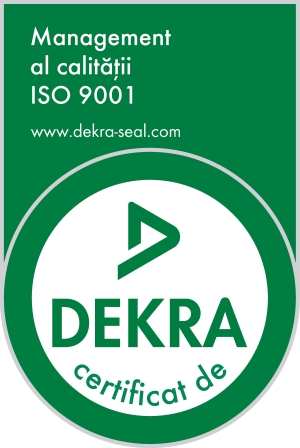Haemorrhoid symptoms may vary from one person to another, but there are a series of general symptoms that may be associated to this type of disease. Depending on the severity of the disease, haemorrhoids may be classified into four main categories, each with its own symptomatology:
1st Degree Haemorrhoids – they are generally associated to the presence of bleeding and pain, but they are not prolapsed.
2nd degree haemorrhoids – these haemorrhoids are prolapsed and may withdraw on their own (may be reducible), with or without bleeding.
The two categories above are regarded as less severe cases and allow for the use of non-invasive treatment methods in our clinics.
3rd degree haemorrhoids are prolapsed and they do not withdraw on their own, but, instead, need to be manually forced back into the anal canal, either by the patient or by the doctor.
4th degree haemorrhoids are the most painful ones and they cannot be manually inserted into the anal canal, and in most cases the only valid treatment option is surgery. This group also comprises thrombosed haemorrhoids (containing blood clots). An alternative classification of haemorrhoids is depending on the area in which they are located: internal haemorrhoids, external haemorrhoids and prolapsed haemorrhoids.
Symptoms of internal haemorrhoids:
Though most internal haemorrhoids are painful, in some cases, they are located above the somatic nerves, and cause no pain.
Constipation episodes, accompanied by high consistency stools, may cause bleeding and violent pain.
In the case of prolapsed internal haemorrhoids, anal secretions are regarded as a common haemorrhoid syndrome. In some cases, there might be irritation and pruritus in the anal area. Even though a fibre-rich diet is an efficient haemorrhoid prevention and improvement method, some severe cases do not allow for the use of a plant-based treatment. In these cases, the specialized medical intervention is recommended.
External haemorrhoids can be easily treated, even though the symptoms associated to this type of haemorrhoids can be much more severe. The most common haemorrhoid symptoms are anal pain and bleeding.
Other symptoms associated to the presence of external haemorrhoids are:
- burning sensation;
- swelling (prominences) in the rectal area;
- bleedings and anal fissures
- fistulae, anal abscesses;
- pain during defecation;
- blood in the stool or on the toilet paper;
- pruritus;
- inflammation;
- pain and discomfort when sitting.
If the disease is in an advanced stage, the use of ointments and creams can temporarily relieve haemorrhoid pain. The use of suppositories, gels or intimate hygiene wipes can temporarily alleviate haemorrhoid symptoms.
Alternative external haemorrhoid treatment methods:
- surgery;
- laser treatment;
- infrared coagulation;
- rubber band ligation.
As mentioned above, thrombosed haemorrhoids are the consequence of the appearance of a clot, which is possible both in the case of internal and of external haemorrhoids. Symptoms associated to this type of haemorrhoids are the inflammation in the anal area, the swelling of the veins and sharp pain during defecation or sitting. The treatment of thrombosed haemorrhoids can involve the use of invasive or minimally invasive surgical methods.



